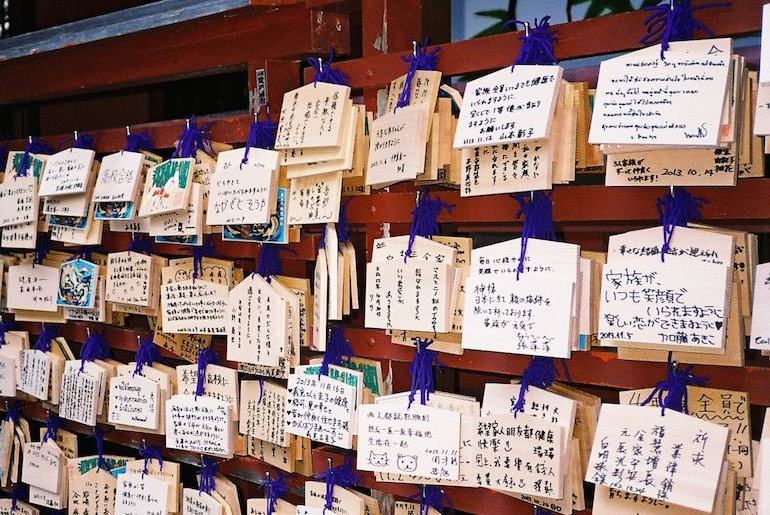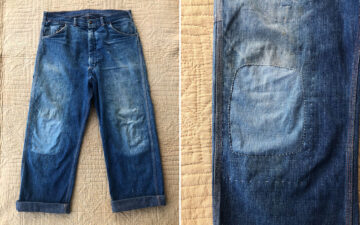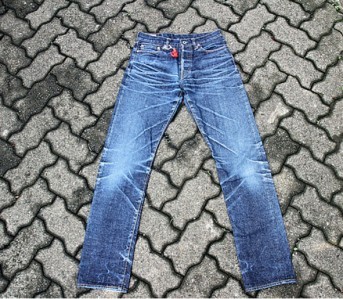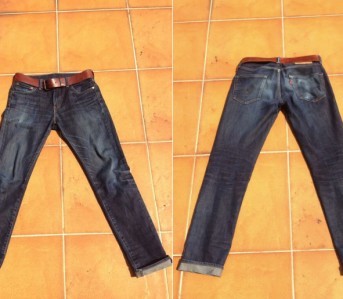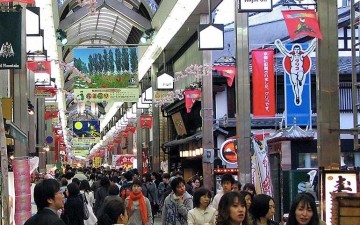Contrary to what most people may spontaneously think, Japan is pretty easy to get by even when you can’t speak Japanese. That’s even truer now that Japan’s injecting billions of yen into its tourism industry. Most big shops will have bilingual staff or even trilingual as the need to cater to Chinese or Thai customers has become key in order to drive sales.
That’s a whole different story for denim brands. Not that they’re lazy or anything, the answer is far from it. Japanese craftsmen only care about making good products and spend little time on marketing or sales–including employing English-friendly sales associates. That means that some basic Japanese vocabulary could become handy, not to say that you should be able to engage in a conversation, but more that you’d be better off if you knew some key words about fitting, pricing, fading process and what not, which we will explain below.
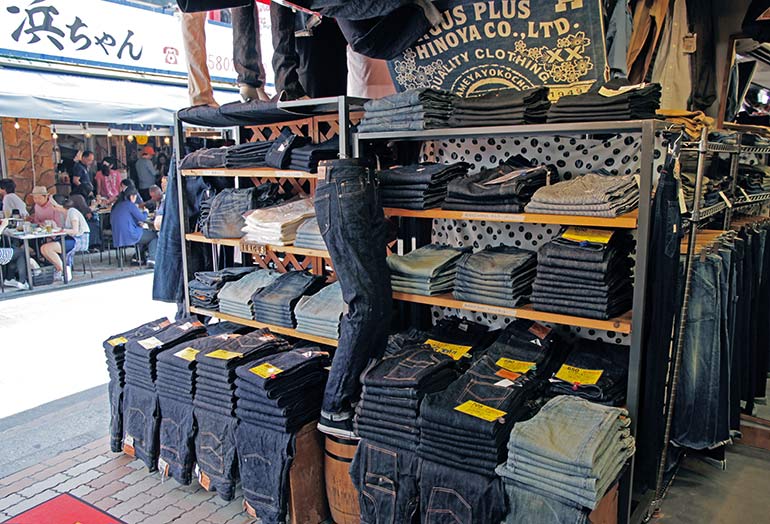
Burgus Plus Corner at Hinoya’s Tokyo store
About Katakana
Before we truly get to the meat of the subject here, we quickly need to go over some aspects of the three Japanese different alphabets. The most famous one is Kanjis, or signs coming from Chinese which represent ideas or names, and account for more than 8,000 characters. Then you have Hiragana and Katakana, both of which are made of 47 characters, but each character instead represents a sound, like letters instead of full words.
The difference between the two is that hiraganas are used to write Japanese words or to conjugate, while katakanas are mainly used to adapt foreign words into Japanese. For example “bread” in Japanese is “pan” (パン), which is their pronunciation for the French word “pain”.
Most words in denim are just adaptations of English words into the Japanese pronunciation system so they will primarily be written in katakanas. Keep that in mind and it’s all going to make sense as you go through the lists below. The English word is on the left and the Japanese pronunciation is written out phonetically on the right. And if you don’t know what these words mean even in English, don’t worry, we’ve linked every term back to our Dictionary.
The Japanese / English Denim Vocab List
Fitting related
- Fit – Fit-toe
- Tapered – Tey-pah-doe
- Straight – Sto-ley-toh
- Skinny – Skee-nee
- Slim – Su-lee-mu
- Too big – Oh-ki-su-gi (hard g)
- Too tight – Tai-toe su-gi (hard g)
- Too long – Na-ga su-gi (hard g)
- Bigger – Mot-toe oh-kee
- Smaller – Mot-toe chee-sai
- High waist – Hai-wey-stoe
- Shrink – Chi-jee-mu (less common: shu-link)
- Lightweight – Lai-to wey-toe (also works: ka-lu-wee)
- Heavyweight – He-bi wey-toe
- Leg twist – Nay-zhee-day
- Hemming – Su-soh-ah-gay
Technical aspects
- Sanforized – Boh-shu-ku-ka-ko
- Unsanforized – Shu-link To Fit-toe
- Selvedge – Sell-lu-bit-chi (also: Ah-ka-mi-mi “red ear”)
- Donut – Do-nut-tu Bow-ton
- Rivet – Li-beh-toe
- Made in Japan – Ni-hon-sei
- Made in China – Chu-go-ku-sei
- Reproduction – Lep-li-ka
- Flat-felled seam – Ma-ki Nui
- Overlock seam – Oh-ber-lah-kuh
- Slub – Mu-rah
- Nep – Nep-puh
- Chainstitch – Chain-stit-chi
Price related
- How much – Ee-ku-la
- Tax free – Tak-ku-su Fu-lee
Fading process
- Fades – Fay-doh OR Iro-oh-chi
- Indigo – In-di-go OR Ai-zo-mei
- Patina – Iro-oh-chi
- Wash – Wah-shuh
- Once-washed – Won Wah-shuh
Our advice
Contrary to popular belief, you’re not going to be a superstar if you’re able to say 2 or 3 phrases from your Japanese-for-tourists guidebook. As a matter of fact, a foreigner will be more appreciated by Japanese people if he brings the whole package, not just himself but also his own language, because they’re going to enjoy trying to speak English with you.
Don’t force yourself to speak Japanese if you can’t speak it, that will only trigger forced laughs and make the conversation more difficult. Instead, use some of the keywords above in English phrases and that should be just as good. And if in doubt, try saying English words with Japanese pronunciation and it might work.

